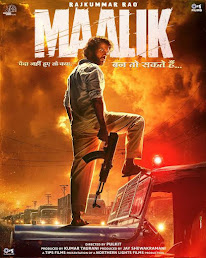If you in Kolkata today and enjoy Piano, Jazz, the Dalhousie Institute, Ballygunge in the evening today.
Enrico Zanisi, the 26 year old from Italy is now in India to showcase his Jazz stories by the name of Piano Tales, an information received by the Istituto Italiano di Cultura New Delhi (ITALIAN EMBASSY CULTURAL CENTRE, NEW DELHI)
Here are the 11 songs from Mr. Enrico Zanisi which he is going to play across Mumbai, Calcutta, Chennai and Pune.
PIANO TALES (2016 Cam Jazz)
 He was the highest scorer at classical degree in piano. His interest in jazz music started at the age of 15; he attended many jazz clinics around Italy studying with K. Werner, J. Calderazzo, L. Grenadier, P. Markowitz, M. Stamm and other great American and Italian musicians.
He was the highest scorer at classical degree in piano. His interest in jazz music started at the age of 15; he attended many jazz clinics around Italy studying with K. Werner, J. Calderazzo, L. Grenadier, P. Markowitz, M. Stamm and other great American and Italian musicians.
He can be reached here.
info@enricozanisi.com
marcellospinetti@libero.it
 He has played with several musicians: With his trio he played in Italy, Europe, Dublin, Warsaw, Edimburgh, Albania, Oslo, London, Katowice, Rejika, Rabat Morocco, Tunisia, New Delhi, Blue Frog - Mumbai (India), San Juan (Portorico), Harare (Zimbabwe), Tel Aviv and Jerusalem (Istrael), Brasil and Mexico, Manhattan,
He has played with several musicians: With his trio he played in Italy, Europe, Dublin, Warsaw, Edimburgh, Albania, Oslo, London, Katowice, Rejika, Rabat Morocco, Tunisia, New Delhi, Blue Frog - Mumbai (India), San Juan (Portorico), Harare (Zimbabwe), Tel Aviv and Jerusalem (Istrael), Brasil and Mexico, Manhattan,
Calcutta\Kolkata
TODAY - 27th November 7:30 pm,
The Dalhousie Institute,
42, Fazlul Haque Sarani, Ballygunge
Delhi
28th November 6:30 pm
India International Centre, Max Mueller Marg
Chennai
2nd December 5:30 pm-7 pm,
KM College of Music & Technology, 19 Vinayagapuram 2nd Street,
MMDA Colony, Arumbakkam
Pune
4th December 7 pm,
Poona Music Society, 2 Lt. Col. Tarapore Road
Pic Source- http://www.enricozanisi.com/
 |
| Piano Tales |
Enrico Zanisi, the 26 year old from Italy is now in India to showcase his Jazz stories by the name of Piano Tales, an information received by the Istituto Italiano di Cultura New Delhi (ITALIAN EMBASSY CULTURAL CENTRE, NEW DELHI)
Here are the 11 songs from Mr. Enrico Zanisi which he is going to play across Mumbai, Calcutta, Chennai and Pune.
PIANO TALES (2016 Cam Jazz)
- Ouverture
- Uma Historia
- Mirage
- Cut It Out
- Mà
- Palabras
- Stairs
- No Truth
- Morse
- Spring Can Really Hang You Up The Most
- O Du Mein Holder Abendstern
 He was the highest scorer at classical degree in piano. His interest in jazz music started at the age of 15; he attended many jazz clinics around Italy studying with K. Werner, J. Calderazzo, L. Grenadier, P. Markowitz, M. Stamm and other great American and Italian musicians.
He was the highest scorer at classical degree in piano. His interest in jazz music started at the age of 15; he attended many jazz clinics around Italy studying with K. Werner, J. Calderazzo, L. Grenadier, P. Markowitz, M. Stamm and other great American and Italian musicians.He can be reached here.
info@enricozanisi.com
marcellospinetti@libero.it
 He has played with several musicians: With his trio he played in Italy, Europe, Dublin, Warsaw, Edimburgh, Albania, Oslo, London, Katowice, Rejika, Rabat Morocco, Tunisia, New Delhi, Blue Frog - Mumbai (India), San Juan (Portorico), Harare (Zimbabwe), Tel Aviv and Jerusalem (Istrael), Brasil and Mexico, Manhattan,
He has played with several musicians: With his trio he played in Italy, Europe, Dublin, Warsaw, Edimburgh, Albania, Oslo, London, Katowice, Rejika, Rabat Morocco, Tunisia, New Delhi, Blue Frog - Mumbai (India), San Juan (Portorico), Harare (Zimbabwe), Tel Aviv and Jerusalem (Istrael), Brasil and Mexico, Manhattan, Calcutta\Kolkata
 |
| Enrico Zanisi |
The Dalhousie Institute,
42, Fazlul Haque Sarani, Ballygunge
Delhi
28th November 6:30 pm
India International Centre, Max Mueller Marg
Chennai
2nd December 5:30 pm-7 pm,
KM College of Music & Technology, 19 Vinayagapuram 2nd Street,
MMDA Colony, Arumbakkam
Pune
4th December 7 pm,
Poona Music Society, 2 Lt. Col. Tarapore Road
Pic Source- http://www.enricozanisi.com/
















